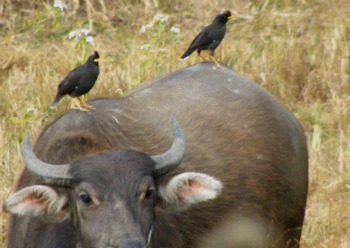Protocooperation is a harmonic and interspecific ecological relationship.
This type of relationship occurs between different species and both obtain benefits. Despite this, species can also live independently, without any kind of harm. Therefore, the relationship is not mandatory.
The interaction between species in protocooperation involves the exchange of transport, protection, food or camouflage.
Examples
Check out some examples of protocooperation that occur in nature:
Sea anemone and hermit crab

The best known example of protocooperation is the relationship maintained between sea anemones and hermit crab or hermit crab.
Anemones offer protection to the hermit crab while transporting the anemone under its shell to other locations.
The anemone can also take advantage of food scraps left by the hermit crab.
toothpick bird and alligator

In this case, the alligator, leaving its mouth open, allows the toothpick bird to reach its interior.
Thus, the bird feeds on the remains of food left between the teeth of the alligator. In turn, the alligator gets an oral cleaning.
birds and cattle

The anu bird usually feeds on ticks found on the skin of cattle. In return, oxen get rid of unwanted ticks.
Read more about the Ecological Relations.
Protocooperation and Mutualism
Protocooperation and the mutualism they are two harmonic and interspecific relationships. They are so similar that protocooperation is also known as facultative mutualism.
The only difference between them is that the protocooperation is a non-mandatory relationship. About that, mutualism is mandatory, where the two species need each other for survival.
When mutualism is mandatory, it can also be called symbiosis. An example of mutualism is the lichen, an association between algae and fungi.
The association between the clownfish and anemones it is also a kind of mutualism. Anemones have stinging cells that ward off predators.
However, clownfish have resistance to these cells and live among anemones. In doing so, they keep themselves safe from their natural enemies.
Know more:
- Ecosystems
- What is Ecology?

